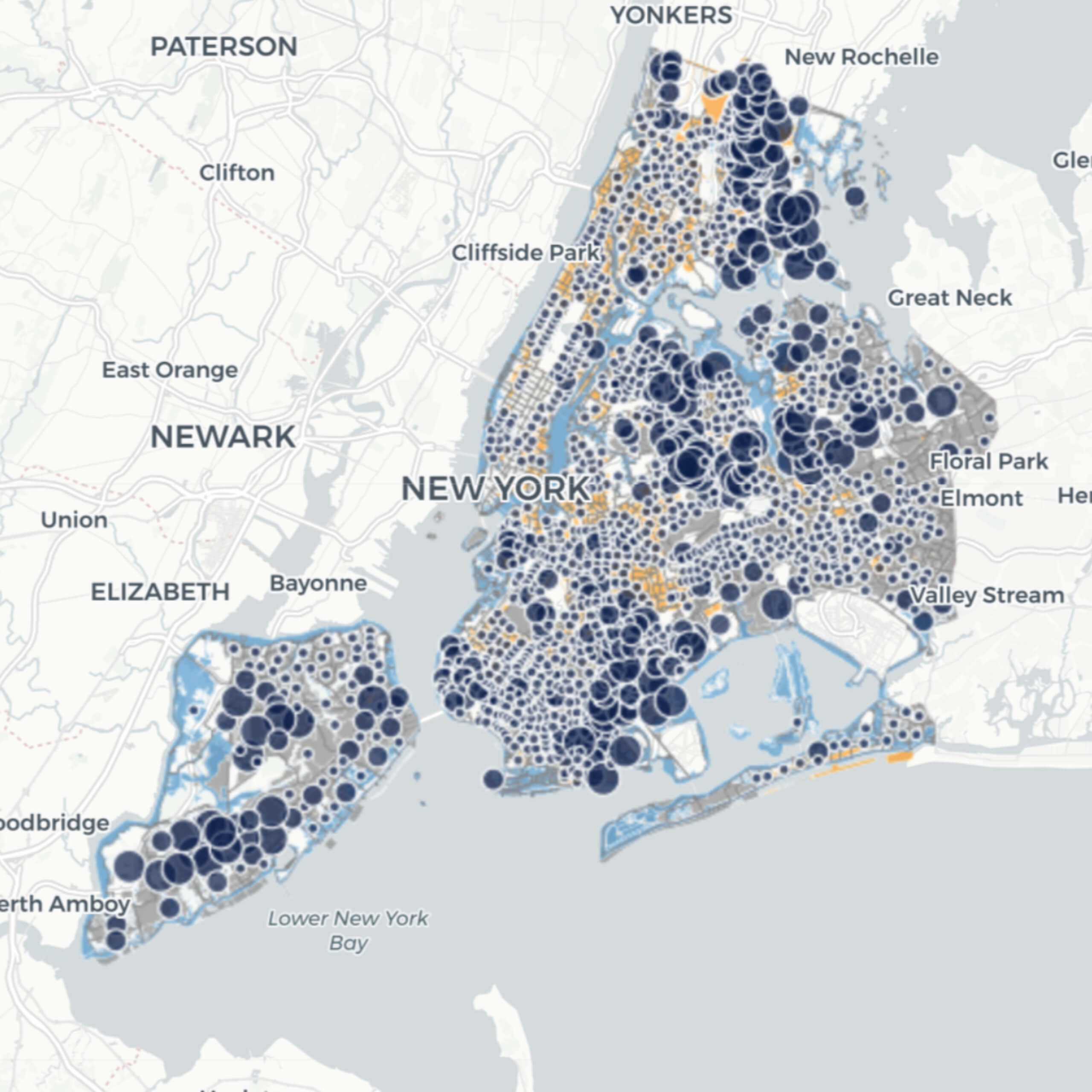Intro
In 2016, CHPC launched its Hidden Housing study to investigate the scope of opportunity that exists for the conversion of basements in New York City into safe and legal rental apartments. Hidden Housing found that there are between 10,000 and 38,000 potential apartments citywide that could be brought into safe and legal use without changing the Zoning Resolution.
This interactive map was created alongside CHPC’s Hidden Housing report, to help bridge the gap between the report’s recommendations and their implementation. Mapping the results of the study helps to identify regions in the city with higher concentrations of potential basement apartments, which might be suitable for a pilot program to test code reforms, technologies, and incentives to support conversions.
Reading the map
The map depicts the distribution of potential basement apartments citywide by 2010 Census Tracts. The larger dots show the greatest concentrations of potential apartments. The orange areas have the least onerous parking requirements.
Methodology
CHPC applied a “Five Filter” system to identify basements for potential conversion, which found that there are between 10,000 and 38,000 of these units across New York City. The range represents basement apartments that could be created as-of-right; meaning that their conversion is not contingent upon changes to or special waivers from the Zoning Resolution.
The lower boundary of 10,000 units represents basements in single-family homes, outside of a floodplain, that does not require additional parking. In reality, this number is likely to be considerably larger, as there are many parking exceptions in New York City that depend on conditions this analysis could not calculate for at a citywide scale. The upper boundary of 38,000 units represents the same set of eligible basements, plus all those that would be eligible in the absence of current parking requirements. In practice, some of these basements may not be convertible, if an additional off-street parking space could not be accommodated. However, on field visits to some of the neighborhoods in the city where large numbers of eligible basements fall within a required parking zone, the CHPC research team has observed that many of the lots in question would qualify for a parking exemption or be able to accommodate a second on-site parking space.

Hidden Housing Map
Use CHPC’s interactive map to explore the scope of opportunity that exists for the conversion of basements in New York City into safe and legal rental apartments.
Related publication
Hidden Housing Report
When new housing is urgently needed, Hidden Housing found between 10,000 and 38,000 potential apartments could be brought into safe and legal use in New York City without changing the Zoning Resolution.
These thousands of potential apartments are in the basements of existing small homes, making them unusually advantageous. Basement conversions bring rental units to the market without having to acquire land. They add apartments without altering the size or shape of the building. They inherently rent for less than similar, above-grade apartments. Homeowners can pay a mortgage, maintain their property, or pay other household expenses with the rent earned on the secondary unit. Basement apartments offer housing options to under-served groups, like extended families and new immigrants.
Based on the study findings, CHPC believes that a basement conversion pilot program in New York City would be an efficient and exciting way to add residential density and expand housing choices in our expensive and highly constrained urban market. It would also address the urgent health and safety concerns connected with illegal occupancy, which occurs far too frequently because the demand for housing is so high.







